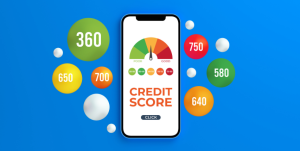How Credit Works: Revolving Credit
15 May 2023

Using credit is simple. You pay, the bill comes later, and you can either pay in full or spread the payment out over months. Making sure you’re using revolving credit wisely, however, is more difficult.
What’s Revolving Credit?
If you’re using a credit card, you’re using revolving credit. This means that you have a predetermined amount you can charge purchase up to, also known as your credit limit. As you use this credit, the amount you can spend goes down. Once you repay an amount, that amount is added back to your available credit up to your credit limit, and you can spend it again.
When you spend on credit, the following happens:
- The institution you have the credit with pays the vendor you’re buying goods and services from.
- The vendor pays a fee to the institution, usually a percentage of purchase price. Why would they do that? Credit makes it easier for the customer buy their goods/services.
- You, per your agreement that you have with the institution in order to access credit, pay the institution back.
Paying it Back
There can be costs to using credit. There are extra charges, such as annual fees, late fees, or exceeded limit fees, but the main cost will likely be interest. The amount that you spend is known as the principal. If you don’t pay off your principal in full, interest will be charged on the remaining unpaid balance each statement cycle. The interest is a percentage agreed upon in your credit agreement with the institution of your outstanding principal. While you cannot negotiate terms with the institution, you can shop around for a better rate and terms before committing.
When It’s Not a Credit Card
Another common type of revolving credit is a line of credit. This is most useful when the amount needed exceeds what you may be able to put on a card or for more unplanned circumstances. For example, a line of credit could be added to your checking account, allowing you to overdraft your account and pay it back later (with interest).
Cash advances are available as another way to receive money and pay back later. However, you’ll likely owe interest from the moment you receive the cash, and the interest will be charged at a higher rate than regular purchases, making them an unattractive option.
Credit Reports and Scores
Want to know how revolving credit factors into your score? Click here to read our breakdown on the credit report and the factors that make up your score.
See Related Posts
popular articles
Categories
2
Today’s update
New Posts
blog read








